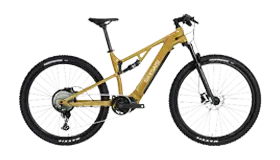Road Bikes vs Mountain Bikes: What’s the Difference?
Road bikes and mountain bikes are two popular types of bicycles, each designed for specific terrains and riding styles. While both serve the purpose of cycling, they have distinct differences that cater to different preferences and needs. Understanding these disparities can help cyclists make informed decisions when choosing the right bike for their intended use.


Design and Structure
One of the most noticeable differences between road bikes and mountain bikes is their design and structure. Road bikes are built for speed and efficiency on smooth, paved surfaces. They typically feature lightweight frames, narrow tires, and drop handlebars, allowing riders to maintain an aerodynamic position for maximum speed. In contrast, mountain bikes are constructed with sturdy frames, wide, knobby tires, and flat handlebars to withstand rough off-road terrains and provide better control and stability.
Terrain and Usage
The terrain for which each type of bike is optimized is another key distinction. Road bikes excel on paved roads, making them ideal for long-distance rides, commuting, and racing. Their lightweight design and narrow tires minimize rolling resistance, allowing riders to cover distances with less effort. On the other hand, mountain bikes are tailored for off-road trails, rocky paths, and steep inclines. Their robust build, wider tires, and suspension systems provide traction and shock absorption, enabling riders to navigate challenging terrains with ease.
Gearing and Components
Road bikes and mountain bikes also differ in their gearing and components. Road bikes are equipped with a wide range of gears optimized for high speeds on flat surfaces, with a focus on efficiency and maintaining a steady cadence. In contrast, mountain bikes have lower gears to tackle steep inclines and technical descents, along with a wider gear range to accommodate varied off-road conditions. Additionally, mountain bikes often feature suspension systems to absorb impact from uneven surfaces, enhancing rider comfort and control.
Riding Position
The riding position is another factor that sets road bikes apart from mountain bikes. Road bike riders typically adopt a more aggressive posture, leaning forward with their hands on the drop handlebars to reduce wind resistance and maximize speed. This positioning emphasizes aerodynamics and efficient power transfer. Conversely, mountain bike riders have a more upright stance, gripping the flat handlebars for better maneuverability and control over rough terrain. This upright position also provides a clear view of the trail ahead, enhancing safety in unpredictable off-road environments.
In conclusion, the disparities between road bikes and mountain bikes are substantial, influencing their performance, suitability for specific terrains, and overall riding experience. While road bikes prioritize speed, efficiency, and long-distance riding on smooth surfaces, mountain bikes prioritize durability, stability, and versatility for off-road trails and challenging landscapes. Understanding these differences is crucial for cyclists to select the most suitable bike based on their riding preferences and intended usage. Whether it's conquering winding roads or tackling rugged trails, the distinct characteristics of road bikes and mountain bikes cater to diverse cycling pursuits, ensuring that riders can find the perfect fit for their cycling adventures.












